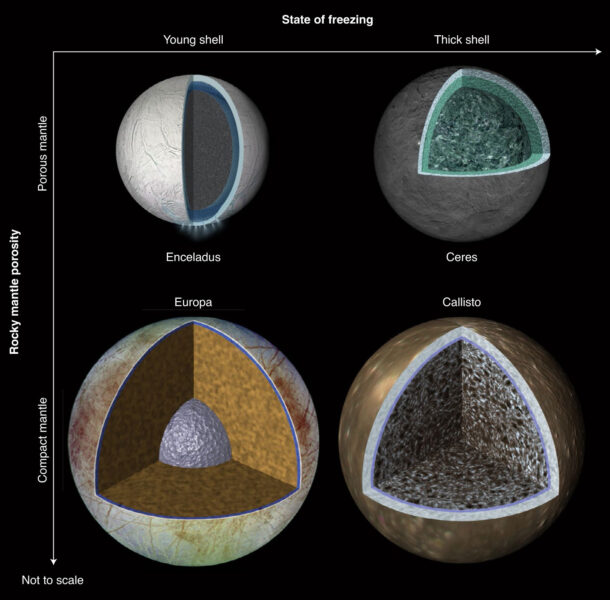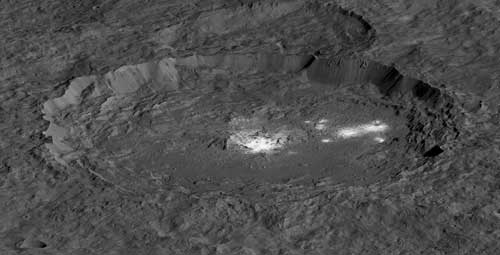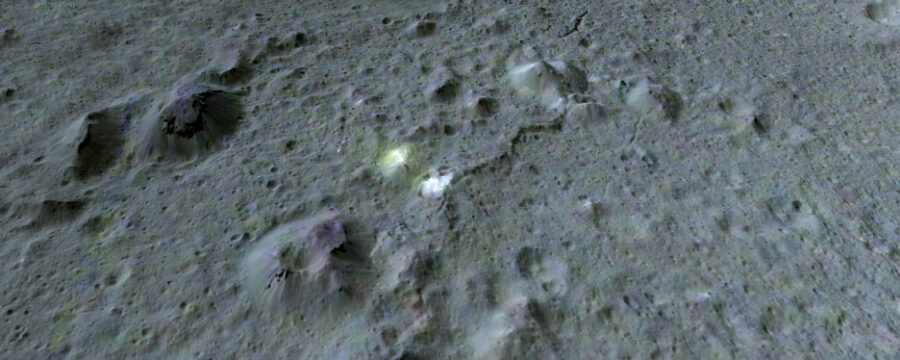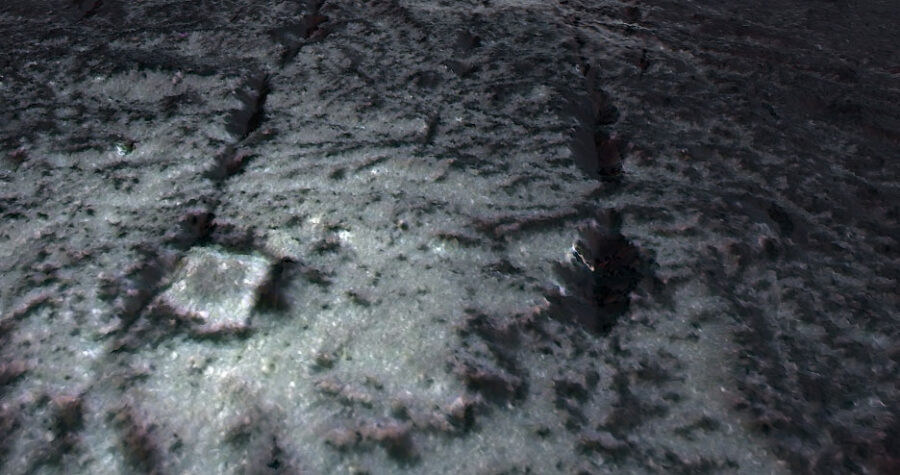Scientists have thought that the largest main-belt asteroid, Ceres, had an ancient ocean beneath its surface. But new data from the Dawn spacecraft show the underground ocean might still be there.

Top left: NASA / JPL-Caltech / UCLA / MPS / DLR / IDA; Top right: NASA / JPL-Caltech; Bottom: NASA / JPL
Ceres is the first-found and largest asteroid in the main belt and the only dwarf planet of the inner solar system. Scientists did not expect an asteroid far from the Sun to have remained geologically active. Yet NASA’s Dawn spacecraft found hints of recent geologic activity when it first arrived at this world.
Now, new analyses of observations from NASA's Dawn spacecraft, presented in seven papers in Nature Astronomy, Nature Geoscience, and Nature Communications, puts those hints on a firm footing: Reports of Ceres’ evolutionary death have been greatly exaggerated. Instead, this 939-km-wide body appears to be (geologically) alive.
Dawn’s Arrival
As Dawn first approached Ceres in 2015, a mysterious bright spot caught the public’s attention. The spot turned out to be reflective salts on the floor of the Occator, a fresh-looking crater 92 km (57 miles) across. But how had they remained so bright in the 22 million years since Occator's creation, rather than being darkened by micrometeorite impacts over time?

NASA / JPL-Caltech / UCLA / MPS / DLR / IDA
As Dawn mapped the asteroid’s surface and topology, the attention of Dawn's geologists turned to Ahuna Mons, an oddly shaped mountain some 4,000 meters (13,000 feet) tall. Its wide top and steep sides marked it as a likely cryovolcano, spewing briny ice rather than lava.

NASA / JPL / UCLA / MPS / DLR / IDA / PSI
What’s more, estimates of the world’s density indicated a crème brûlée, one with a tough shell surrounding a mushy interior.
These hints first seemed to indicate an ancient subsurface ocean that had long frozen over. But new analysis of data that Dawn collected in the last phase of its extended mission, from June to October 2018, indicates that the ocean is still there, feeding cryovolcanism and other geologic activity.
An Active World
The first line of evidence comes from Dawn’s Visible and Infrared Mapping Spectrometer, which mapped minerals across the asteroid’s surface. Maria Cristina De Sanctis (National Institute of Astrophysics, Italy) and colleagues report in Nature Astronomy the discovery of hydrated sodium chloride, also called hydrohalite, among the salts in the bright spots of Occator. Geological processes must have exposed this mineral recently, because it’s not stable on Ceres’ surface.

NASA / JPL-Caltech / UCLA / MPS / DLR / IDA / USRA-LPI
A second line of evidence comes from low-altitude measurements, made when Dawn flew as close as 35 km (22 miles) from the surface. By measuring the world’s pull on it, the mission could gauge small variations in gravity that would be caused by differences in densities beneath the crust.
Carol Raymond (Jet Propulsion Laboratory) and colleagues show in Nature Astronomy that the data indicate negative density variations in and near Occator. In other words, there’s stuff below the surface that's less dense than it ought to be, assuming it’s all solid. However, Raymond’s team suggests that it’s not solid — instead, there’s a brine-rich reservoir under the surface. Melted millions of years ago by the impact that created the crater, the reservoir has stayed fluid due to the presence of salts and other minerals, which lower water’s freezing point and also provide a layer of thermal insulation that prevents the water from losing heat as quickly.
These observations resolve the ongoing debate about what made the patchwork of bright spots in Occator, collectively called Cerealia Facula — and what has kept them so bright. Analysis of the gravity data supports the idea that not only did the impact melt an underground reservoir, but it also likely created fractures connecting Occator's floor to a larger, deeper, and older reservoir, one that is capable of driving very recent or even current activity.

NASA / JPL-Caltech / UCLA / MPS / DLR / IDA / USRA-LPI
Ocean World
“Ongoing activity in Occator brings additional and independent evidence for a deep brine layer and upgrades Ceres to the realm of ocean worlds,” writes Dawn’s project scientist Julie Castillo-Rogez (JPL). Her perspective commentary accompanies the seven articles appearing in various Nature journals.
She notes, though, that the underground ocean on Ceres is not like those harbored by the outer solar system's other ocean worlds, such as Jupiter’s moon Europa and Saturn’s Enceladus. Ceres’ is more of a slurry, Castillo-Rogez explains: about 25–30% saltwater mixed with a high concentration of rocky particles. Moreover, the ocean and overlying crust appear to be interacting as the ocean gradually freezes. Perhaps Ceres provides us with an end-of-life view of an ocean world.
Whether such an ocean would be habitable is still an open question, but a fascinating one to consider. As Castillo-Rogez writes, that makes Occator's unique floor “an obvious target for a future mission.”
 0
0









Comments
You must be logged in to post a comment.